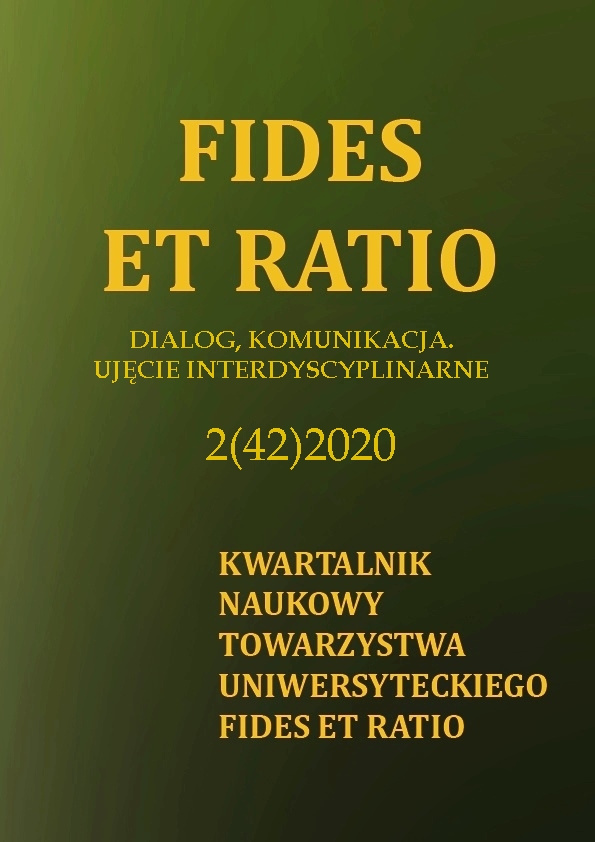Abstract
The text deals with the topic of the importance of tyrican purple and byssus, which have been an indicator of social status since ancient times. In the first part, it outlines the history of organic red dyes for fabrics, from which robes were treated as a message of the superiority of power and authority. In the second one - it presents three types of natural silk: sea silk – byssus, Chinese silk and spider silk. The first of which was, next to the tyrian purple, the most expensive fabric of antiquity.
An analysis of the biblical meanings of quotations mentioning purple, scarlet, crimson, byssus or silk shows two ways of perceiving these status symbols: as an image of immense wealth and the highest majesty (divine and royal) and its loss due to unjust acts. The quoted examples from European art and literature show that purple and byssus have over time become topoi of wealth, authority, justice of power and even immortality and divinity.
The most important reason (next to the value of the organic and naturally dyed fabrics) was their shiny surface, which allowed them to be identified with the most expensive and non-corrosive gold ore, whose symbolism was culturally taken over by them.
References
A Rival of the Silkworm (1900), The Literary Digest, vol. 21, no 23.
Arabas I., Biniecka M., Czyż L.M., Tulik S. (2019), Legendarne surowce lecznicze pochodzenia morskiego: historia z ciagiem dalszym, Farmacja Polska, (75)12, s. 692-697.
Bagnal R. (2013), The Encyclopedia of Ancient History, t. 1-13, Hoboken: Wiley-Blackwell.
Bender (2010), Wzorzyste włoskie tkaniny jedwabne z polskimi herbami w XVI i XVII wieku, w: Pod niebem północy. Z dziejów polsko-włoskich związków artystycznych, Zamość: publikacja on-line (b.p), http://muzeum-zamojskie.pl/2595 (dostęp 15.06.2020.)
Biblia Tysiąclecia (1965), red. benedyktyni tynieccy, Poznań: Pallotinum.
Biniecka M., Wrześniak M. (2020), Valorizzazione del patrimonio culturale: il bisso, Kwartalnik naukowy Fides et Ratio, nr, s.
Cartwright M. (2016), Tyrian Purple, w: Ancient History Encyclopedia, publikowana on-line: https://www.ancient.eu/Tyrian_Purple/ (dostęp 15.06.2020).
Eco U. (2005), Historia Piękna, Poznań: Rebis.
Forstner D. (2001), Świat symboliki chrześcijańskiej, Warszawa: PAX.
Gage J. (2008), Kolor i kultura. Teoria i znaczenie koloru od antyku do abstrakcji, przeł. J. Holtzman, Kraków: Universitas.
Gage J. (2010), Kolor i znaczenie. Sztuka, nauka i symbolika, przeł. J. Holzman, A. Żakiewicz, Kraków: Universitas.
Gloger Z. (1900-1903), Encyklopedja staropolska ilustrowana, t. 1-4, Warszawa: P. Laskauer i W. Babicki, opublikowana on-line: https://pl.wikisource.org/wiki/Encyklopedia_staropolska/Ca%C5%82o%C5%9B%C4%87/Tom_IV (dostęp 15.06.2020).
Herodot (1862), Dzieje, tłum. A. Bronikowski, Poznań: w Komisie Jana Konstantego Żupańskiego.
Hofenk de Graff J.H. (2004), The Colourful Past: Origins, Chemistry and Identification of Natural Dyestuffs, London: Archetype Books.
Homer, Iliada, tłum. F.K. Dmochowski, cyt. za https://wolnelektury.pl/katalog/lektura/homer-iliada.html (dostęp 15.06.2020).
Homer, Odyseja, tłum L. Siemiński, cyt. za https://wolnelektury.pl/katalog/lektura/homer-odyseja.html (dostęp 15.06.2020).
Jaworski J.S. (2010), Properties of byssal threads, the chemical nature of their colors and the Veil of Manopello, Proceedings of the International Workshop of the Scientific approach to the Acheiropoietos Images, ENEA, Frascati,publikowane on-line http://manoppello.eu/index.php?go=badania (dostęp 15.06.2020).
Jędrzejko K. (2008), Rośliny barwierskie w grupie roślin leczniczych i kosmetycznych, Panacea 4 (25), s. 8-10.
Kajdański E. (2005), Chiny. Leksykon, Warszawa: Książka i Wiedza.
Karali L., Megaloudi F. (2008), Purple dyes in the Environment and History of the Aegean: a short revew, w: Purpureae Vestes I. Textiles y tintes del Mediterráneo en época romana, ed. C. Alfaro, J.P. Wild, B. Costa, Valenzia: PUV, s. 181-184.
Kochanowski J., O fraszkach, publikacja on-line: https://wolnelektury.pl/katalog/lektura/fraszki-ksiegi-trzecie-o-fraszkach-fraszki-tu-niepowazne-z-s.html (dostęp 15.06.2020).
Konopnicka M. (1903), Na jagody, publikacja on-line: https://wolnelektury.pl/katalog/lektura/na-jagody.html#anchor-idm140014805899944 (dostęp 15.06.2020).
Künstler M.J. (2006), Mitologia chińska. Warszawa: Oficyna Wydawnicza Auriga.
Latimer J. (2009), Buccaneers of the Caribbean: How Piracy Forged an Empire, Cambridge, MA: Harvard University Press.
Lurker M. (1989), Słownik obrazów i symboli biblijnych, tłum. K. Romaniuk, Poznań: Pallotinum.
Miciński T. (1909), W mrokach Złotego Pałacu czyli Bazilissa Teofanu: tragedja z dziejów Bizancjum X. wieku, Kraków: Drukarnia Uniwersytetu Jagiellońskiego.
Mierzwiński A. (2019), Eschatologiczne skutki przędzenia i tkania. Z dziejów semiotyzacji działań wytwórczych w kontekstach sepulkralnych, Wrocław: Instytut Archeologii i Etnologii PAN.
Modzelewski S., Purpura i ślimaki, https://www.opiekun.kalisz.pl/purpura-islimaki/ (dostęp 15.06.2020).
Ostrogorski G. (1969), History of the Byzantine State, New Brunswick: Rutgers University Press.
Passerini L. (1861), Genealogia e storia della famiglia Rucellai, Firenze: M. Cellini.
Pismo święte, przeł. J. Wujek, Kraków: Wydawnictwo Apostolstwa Modlitwy.
Quattrocchi U. (2012), CRC World Dictionary of Medicinal and Poisonous Plants. Common Names, Scientific Names, Eponyms, Synonyms and Etymology , Boca Raton: CRC Press, Taylor & Francis Group.
Reinbold M. (1970), History of Purple as Status Symbol in Antiquity, Bruxelles: Latomus.
Ripa C. (1998), Ikonologia, przeł. I. Kania, Kraków: Universitas.
Rzepińska M. (1989), Historia Koloru w dziejach malarstwa europejskiego, t. 1-2, Warszawa: Arkady.
Silk-Producing Spider of Madagascar (1990), Scientific American, vol. 83, no. 9.
Słownik polszczyzny XVI wieku, hasło Bisior, publikacja on-line: www.spxvi.edu.pl
Soth A. (2018), The Tangled History of Weaving with Spider Silk, publikacja on-line: https://daily.jstor.org/the-tangled-history-of-weaving-with-spider-silk/ (dostęp 15.06.2020).
Stanios E. (2013), Szata zdobi władcę, czyli jak ubiór pomaga odgrywać rolę bizantyjskiego basileusa?, Annales Universitatis Mariae Curie-Skłodowska, vol. XXXI, s. 43-54.
Torre Arrigoni della D. (2015), Colour in Painting: materials and spirituality, Morrisville: Lulu Enterprises.
Uhlig H. (2007), Jedwabny szlak. Kultury antyku między Chinami a Rzymem, Katowice: Wydawnictwo Książnica.
Wisniak J., Jean Jacques Colin (2017), Revista CENIC Ciencias Biológicas 2017, 48, s. 112–120.
Zagadka biblijnego „błękitu” rozwiązana?, Archeologia Biblijna, https://archeologiabiblijna.wordpress.com/2014/01/10/zagadka-biblijnego-blekitu-rozwiazana/ (dostęp 15.06.2020).
